The adaptable Kettal PH1 Pavilion series allows the admiration of nature from the comfort of designer style. Kettal’s Design Manager Antonio Navarro explains the open system on which they are built.

October 5th, 2018
Historically, the pavilion has been seen as a chance to embrace the comfort of indoor design, in the beauty of the outdoors. A pavilion is a place to relax, socialise, gather and admire the outdoor environment from the comfort of a light, shaded structure. The Kettal PH1 Pavilion series is the contemporary designer answer to this iconic way to appreciate the outdoors in comfort.
Designed by Kettal with architectural engineering and technology in mind, the PH1 is a variable pavilion system able to be employed across varying landscapes, architectural situations and environments. With a minimal structure, the pavilions serve as stripped back, relaxed spaces with a naturalist aesthetic and open spaces that flow freely into each other. Light shines through unimpeded, sight lines offer unhindered views of the surrounds, and the light structure is suitable to any contemporary space.
The concept is characterised by a sense of simplicity and design sincerity in its structural elements. The aluminium frame can be teamed with over forty covers that define indoor and outdoor spaces – a variable functionality that carries over from aesthetics to design.
“It’s a profile that has all the connections inside,” says Kettal’s Design Manager Antonio Navarro. “You can put a water feature to make a shower, or you can take the water from the roof. You can add electricity to allow you to plug things in, or use it for the louvres and lighting.”
He continues, “When designing, I was thinking of a complete open system that gives architects the tools to finish the product. This is why you can have different scales and materials for the structure; you can have wood, stone, fabric, doors or panels… you have all the tools necessary to align with your project.”
When you think of outdoor living, cooking often isn’t far behind. The kitchen options available for the PH1 Pavilions bring a sense of homeliness and practicality to the structures, while also serving as a reminder of the true intent – to act as a place that combines the coming together of people, of socialising, and of admiration of the surrounding environment.
INDESIGN is on instagram
Follow @indesignlive
A searchable and comprehensive guide for specifying leading products and their suppliers
Keep up to date with the latest and greatest from our industry BFF's!
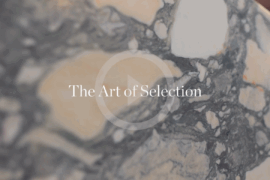
CDK Stone’s Natasha Stengos takes us through its Alexandria Selection Centre, where stone choice becomes a sensory experience – from curated spaces, crafted details and a colour-organised selection floor.

London-based design duo Raw Edges have joined forces with Established & Sons and Tongue & Groove to introduce Wall to Wall – a hand-stained, “living collection” that transforms parquet flooring into a canvas of colour, pattern, and possibility.
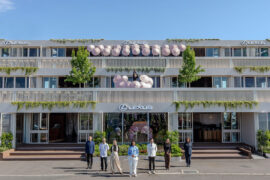
Melbourne interior designer Brahman Perera creates three-level trackside space exploring synthesis of craft and technology.
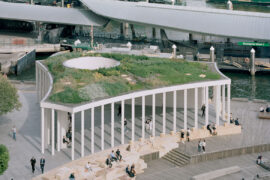
Pier Pavilion by Besley & Spresser provides a refreshing, architecturally thoughtful and versatile public space by the water at Barangaroo.
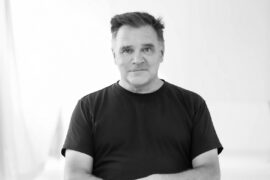
In this comment piece, COX Principal David Holm reflects on Carlo Ratti’s curatorship in which climate, colonisation and gender equity took centre stage at the Venice Biennale.

With the new Tangram collection for Cesar, García Cumini introduces a timeless system of delightfully winding volumes, artfully concealed functionality and sculptural compositions that move beyond rigid angularity to redefine the social heart of the home with intuitive flow.
The internet never sleeps! Here's the stuff you might have missed

‘Come Together’ takes a global view of multigenerational design, an increasingly popular phenomenon with some especially notable examples in Australia.
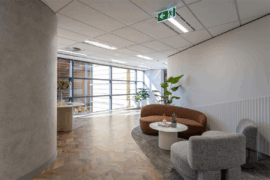
A thoughtful, low-waste redesign by PMG Group in collaboration with Goodman has transformed a dated office into a calm, contemporary workspace featuring a coastal-inspired palette and Milliken flooring for a refined finish.